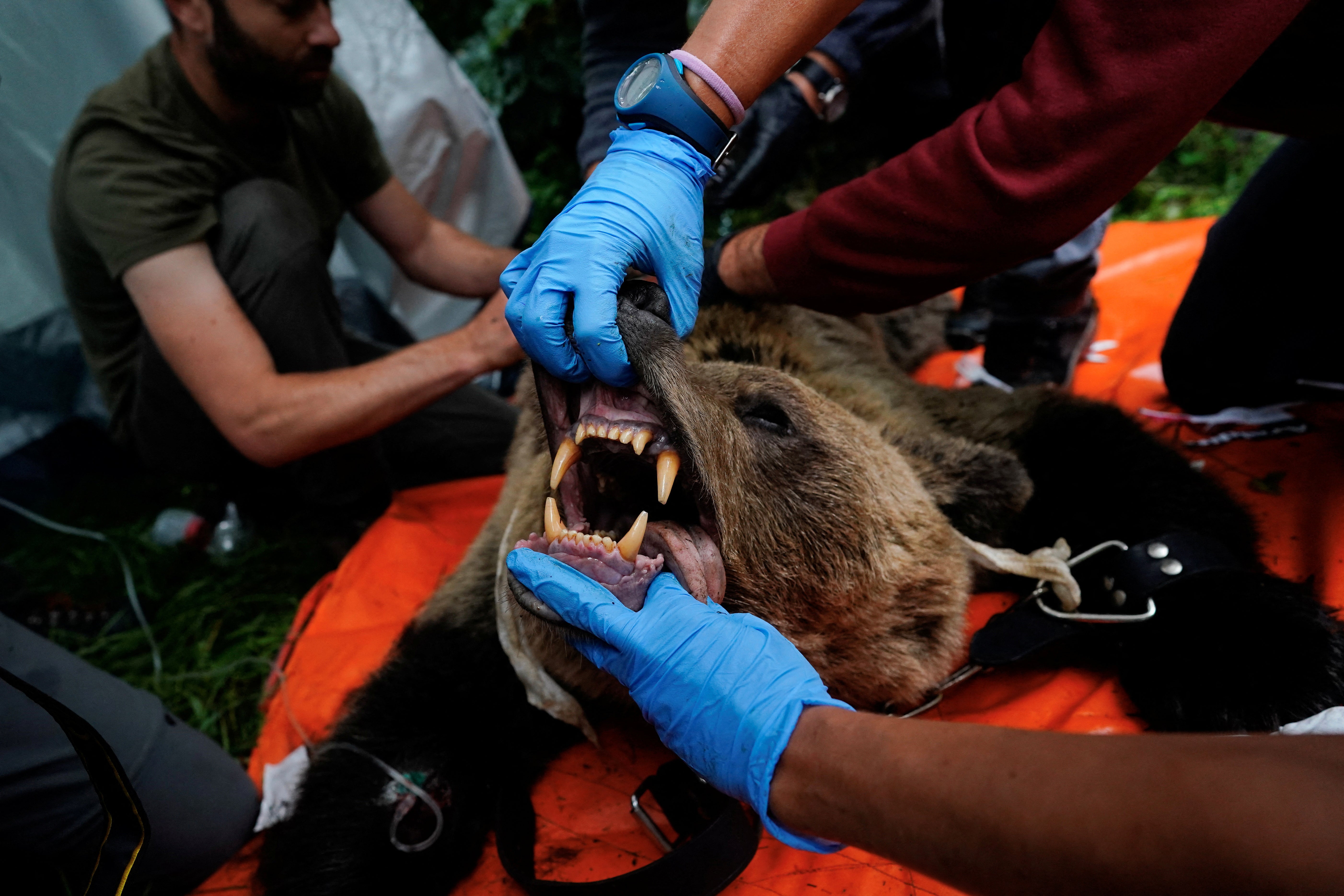Spain’s bear population is on the increase – and locals are getting worried
Locals are being trained in what to do if they come face-to-face with a bear

Spain’s brown bears, once nearly extinct, stray into the mountain villages in the north of the country so often these days that the regional government of Castile and Leon has set up a patrol for locals to report animals on the prowl.
The patrol, which has nine rangers, protects residents and their crops in the mining town of Villablino, in the nearby province of Palencia, and other surrounding areas, aiming to keep the endangered Iberian brown bears safe and healthy and allow humans and animals to coexist.
Adult bears can weigh as much as 150-250 kg and can measure up to 2 metres. They can live for up to 30 years. Three decades ago there were only 60 bears left in Spain but today their population numbers over 400.
The higher number of bears is leading to a greater number of encounters with humans, however. For some, the bears are unwanted intruders, but others welcome them and the increased numbers of tourists they attract.
If locals spot a bear they are advised to call the rangers and keep calm.
To ease locals’ concerns, the patrol must act fast. As soon as staff receive a call to their 24-hour phone line, they grab their radios, rubber ball shotguns and tracking devices and rush out the door.
Their mission is to deter the bears from the villages by firing warning shots, while following a strict protocol.
“The increase in the bear population leads to an increase in conflicts (with humans),” said patrol coordinator Daniel Pinto. The bears now approach the villages more often as they struggle to find enough food up in the mountains, he added.
Villager Angeles Orallo, 73, is one of those who finds the bears’ presence challenging.
“We are older people... the fact that we can’t go out for a quiet walk is sad,” she lamented. She has been struggling to keep the bears out of her vegetable garden.
But while some locals feel unsafe and worry about their crops, the patrol is proving a boon for the Iberian brown bear population and is providing an income for locals from tourists who come to the region to spot the bears, still considered endangered, in the Cantabrian mountains.
Thanks to more awareness, strong surveillance and compliance with conservation rules, the Iberian brown bear population is growing.
Historically, brown bears roamed much of the Iberian peninsula but hunting and loss of habitat had a significant impact on the species. They received protected status in 1973, although hunting was allowed to continue.
The patrol also wants to improve understanding of the bears’ behaviour. To that end, a team of veterinarians, biologists and mountain rangers developed in 2021 a new satellite system to monitor the animals, as well as an innovative, remote-controlled cage that can trap the bears without trapping other species.
Once caught, the bears are anaesthetised and a GPS collar is placed around their necks to make it easier to locate them in the future. Rangers have so far trapped 12 bears that were then released far from the villages, preventing them from eating crops, and garden fruit and vegetables.
Knowing the bears are further away reassures locals they won’t bump into one.
“The aim is to seek solutions to the conservation challenges we face with bears, mainly in urban environments,” said David Cubero, coordinator of the brown bear capture and radio-tagging plan.
“What we want is to monitor at all times, in real time... to be able to act quickly, always to improve the bears’ coexistence with humans.”
Subscribe to Independent Premium to bookmark this article
Want to bookmark your favourite articles and stories to read or reference later? Start your Independent Premium subscription today.

Join our commenting forum
Join thought-provoking conversations, follow other Independent readers and see their replies